The character and personality of the cat
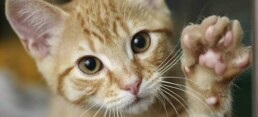
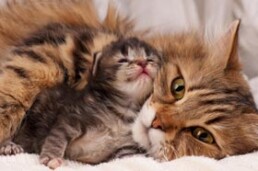
It is a common belief that cats are asocial animals; they are indeed, but their social system differs from that of domestic dogs. Cats have not undergone the same level of artificial selection which have been subjected dogs, nor have undergone a specific development of the breed to perform specific tasks.
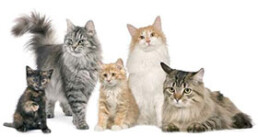
The social group
The central unit of the feline social community is the one that includes the female cat and her kittens. Weaning takes place between 5 and 8 weeks, although it is possible that some kittens continue this stage of their life for a longer time, more for a social need rather than for their nutrition.
In the wild kittens remain with their mother or within the extensive social group to which the mother belongs for their first 12-18 months of life. Males leave the group before social maturity (2-4 years old) more commonly than females. In the wild you can find several generations of related female cats who provide young cats with a certain degree of “community” assistance.
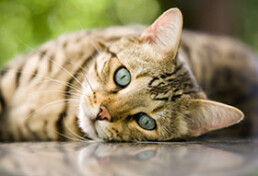
The formation of his personality
Fatherhood is an important factor in determining the personality of cats. Bold male cats who are sociable and good-natured seem to generate kittens having a similar personality. The genetic mechanism concerning “shy” or “grumpy” personalities, in which no type of human intervention can change something, is poorly known.
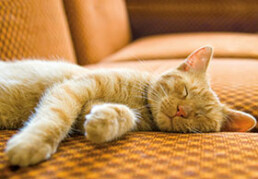
The role of experience is a key point. Kittens between 2 and 7 weeks of age who socialize with people are more friendly to them, have superior capabilities and may have fewer problems with some forms of aggressiveness.
An early socializing may increase the effect of the paternal attitude towards a willingness to explore. Between 12 and 14 weeks of age, kittens shift from social game to the social struggle and to a more predatory game. Early weanings hasten this change.
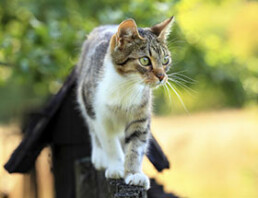
Marking the territory
In ancient times cats were using open lands with good drainage for evacuation. This innate behavior may reflect their North African origin. Cats can scratch the substrate before, after, or not at all when they evacuate. They may dig to cover their urine or feces. All of these behaviors are variations of the “normal” one. The spraying is the attitude of laying urine on a vertical surface with the launch of a sparse flow of liquid that is usually accompanied by the elevation and shaking the tail, and if possible, by the act of stepping with their paws. The spraying is the most common form of marking behavior, typical of cats.
The marking with urine, wandering and fighting with other cats are all behaviors influenced by hormones. Sterilization, in particular castration, is able to reduce or prevent the occurrence of these problems. Cats are heavily influenced by the role of odor in their environment and mark with urine, feces and sebaceous secretions.
Behavioral problems
The most common cat’s behavior problems are associated with the evacuation and anxiety may play a role in their development. Other behavior problems involve aggressiveness or hyperesthesia, intended as excessive tactile response compared to what is justifiable by external stimuli.

Share
Related posts
The ultimate frontier of cat allergy
There are many people who suffer from allergies caused by the…
Holiday with 4-leggend friends
What measures should you take to plan a top holiday with your…

